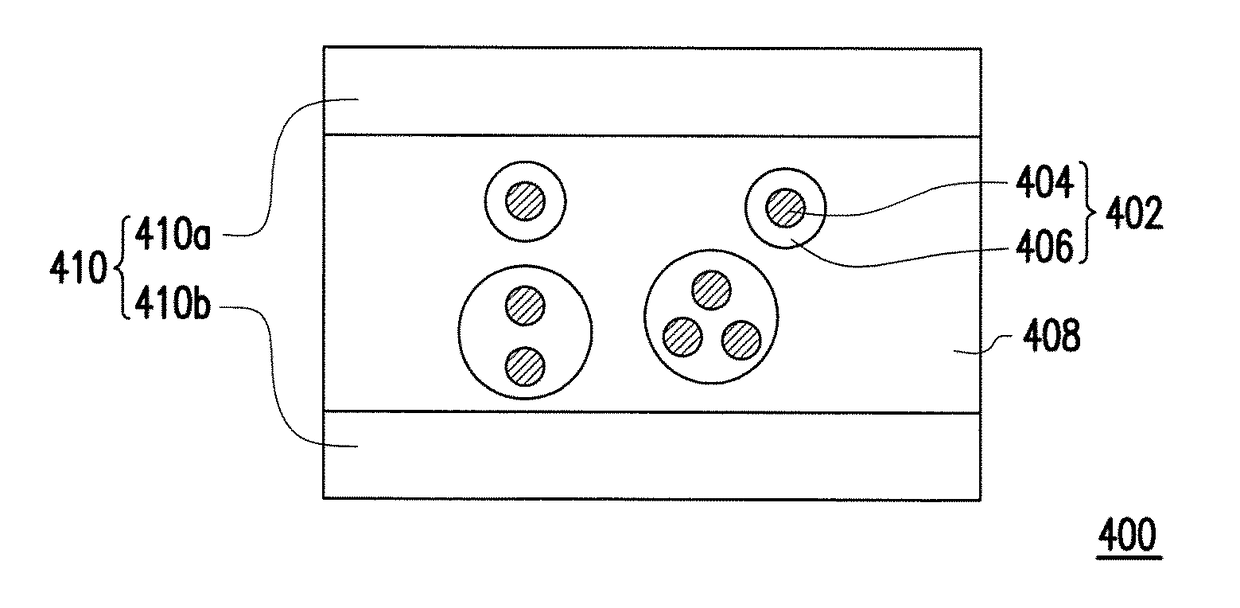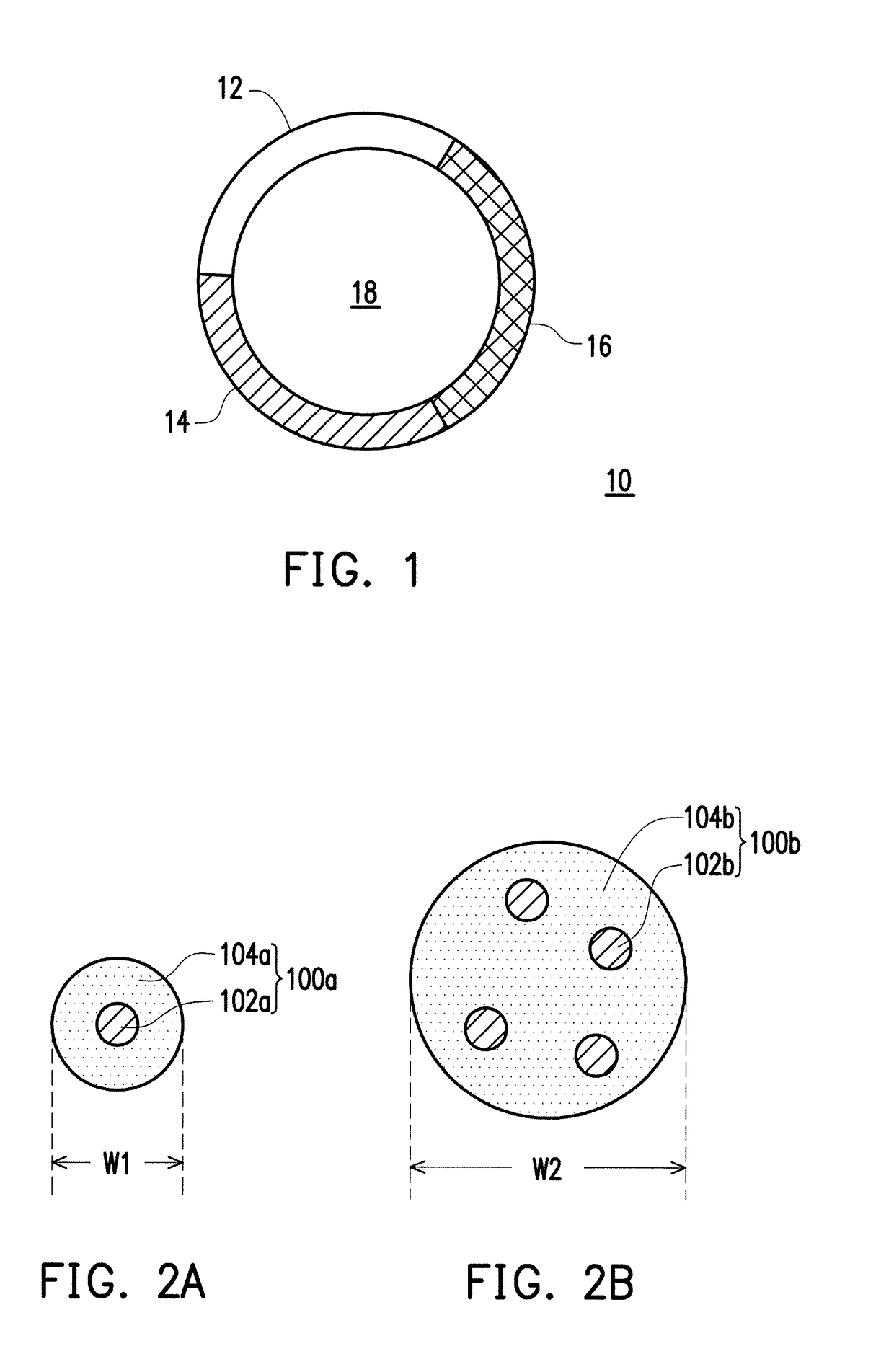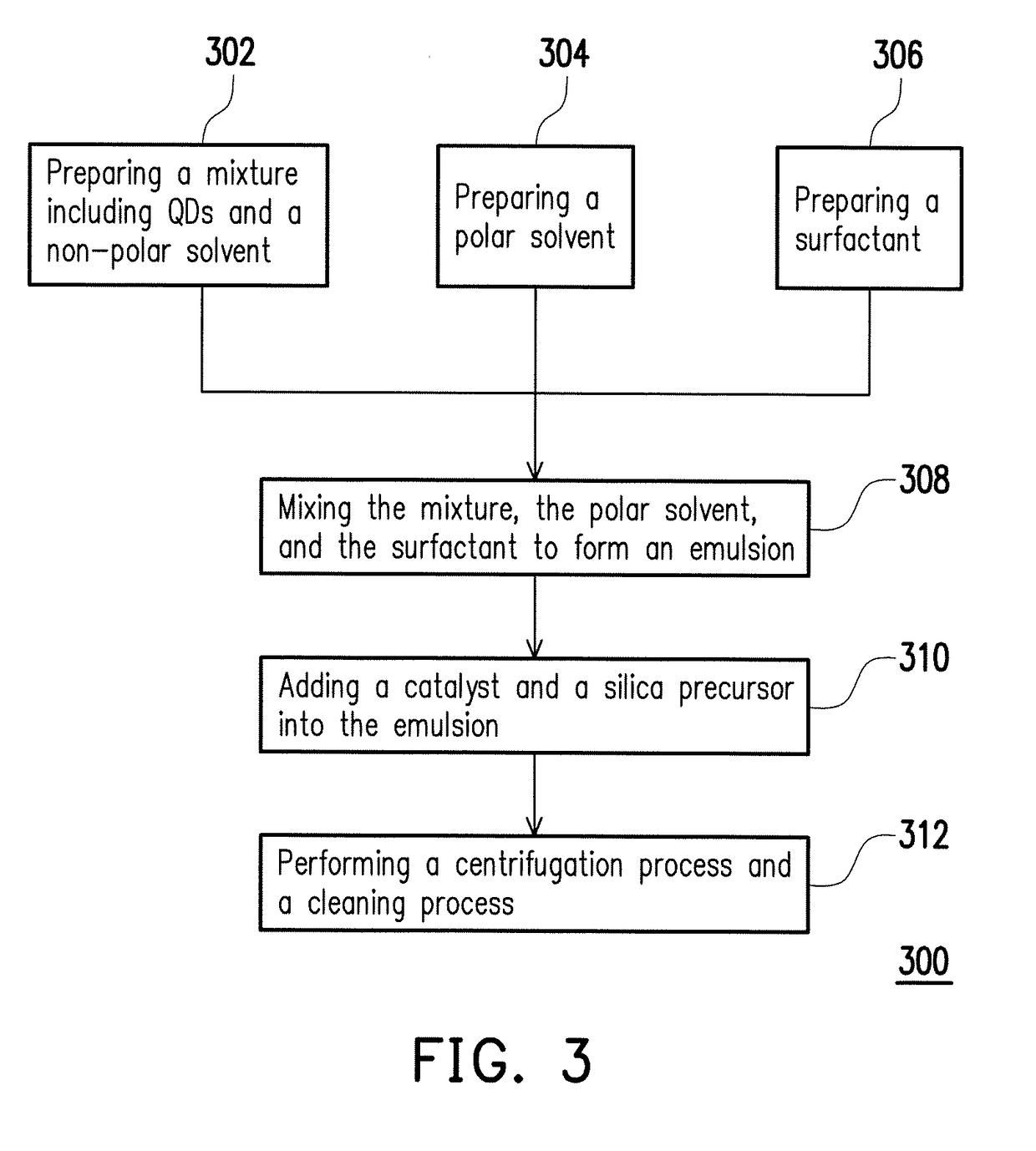Light emitting apparatus using composite material, method of manufacturing composite material, and optical film
- Summary
- Abstract
- Description
- Claims
- Application Information
AI Technical Summary
Benefits of technology
Problems solved by technology
Method used
Image
Examples
experimental example 1
[0075]CdSe / ZnS quantum dots (200 mg; prepared according to literature procedures) are dissolved in 50 ml of cyclohexane to form a mixture. Igepal CO-520 (purchased from Sigma-Aldrich) is added in the mixture, wherein a weight ratio of quantum dot to Igepal CO-520 is 1:5. Water (50 ml) is added and stirred at room temperature (about 25° C.) until half of the liquid evaporated. Ammonia (384 μl) and ethyl acetate (2 ml) is then added and mixed homogenously before 320 82 l of tetraethyl orthosilicate (TEOS) is added and reacted for 8 hours. After the reaction, the precipitate is collected by centrifugation and then washed with ethanol three to five times. The precipitate is dried in the oven at 70° C. for one hour to form a composite material of Experimental example 1. The composite material of Experimental example 1 is characterized by transmission electron microscopy (TEM). As shown in FIG. 5, the CdSe / ZnS quantum dots are encapsulated by the silica.
experimental example 2
[0076]In the following, the manufacturing method of composite materials of Experimental example 2 to Experimental example 4 are conducted in similar methods described as Experimental example 1.
[0077]The composite material of Experimental example 2 includes green CdSe / ZnS quantum dots and silica (SiO2), wherein the green CdSe / ZnS quantum dots are encapsulated by silica. Then, 5 wt % of composite material of Experimental example 2 and 95 wt % of two-part silicone (Dow Corning® OE-6370) are mixed, then applied onto a section of a digital light processing (DLP) projector color wheel and cured at 100° C. for 3 hours. The projector color wheel was then installed into a DLP projector to produce green test screen. As shown in FIG. 6A, a green test screen was produced successfully using silica encapsulated green quantum dots, showing that the silica encapsulation allowed the green quantum dots to survive the extreme environment (e.g., high temperature up to 180° C.) inside the projector.
experimental example 3
[0078]The composite material of Experimental example 3 includes red CdSe / ZnS quantum dots and silica (SiO2), wherein the red CdSe / ZnS quantum dots are encapsulated by silica. Then, 5 wt % of composite material of Experimental example 3 and 95 wt % of two-part silicone (Dow Corning® OE-6370) are mixed, then applied onto a section of a digital light processing (DLP) projector color wheel and cured at 100° C. for 3 hours. The projector color wheel was then installed into a DLP projector to produce red test screen. As shown in FIG. 6B, a red test screen was produced successfully using silica encapsulated red quantum dots, showing that the silica encapsulation also allowed the red quantum dots to survive the extreme environment (e.g., high temperature up to 180° C.) inside the projector.
PUM
| Property | Measurement | Unit |
|---|---|---|
| Temperature | aaaaa | aaaaa |
| Temperature | aaaaa | aaaaa |
| Particle size | aaaaa | aaaaa |
Abstract
Description
Claims
Application Information
 Login to View More
Login to View More - R&D
- Intellectual Property
- Life Sciences
- Materials
- Tech Scout
- Unparalleled Data Quality
- Higher Quality Content
- 60% Fewer Hallucinations
Browse by: Latest US Patents, China's latest patents, Technical Efficacy Thesaurus, Application Domain, Technology Topic, Popular Technical Reports.
© 2025 PatSnap. All rights reserved.Legal|Privacy policy|Modern Slavery Act Transparency Statement|Sitemap|About US| Contact US: help@patsnap.com



